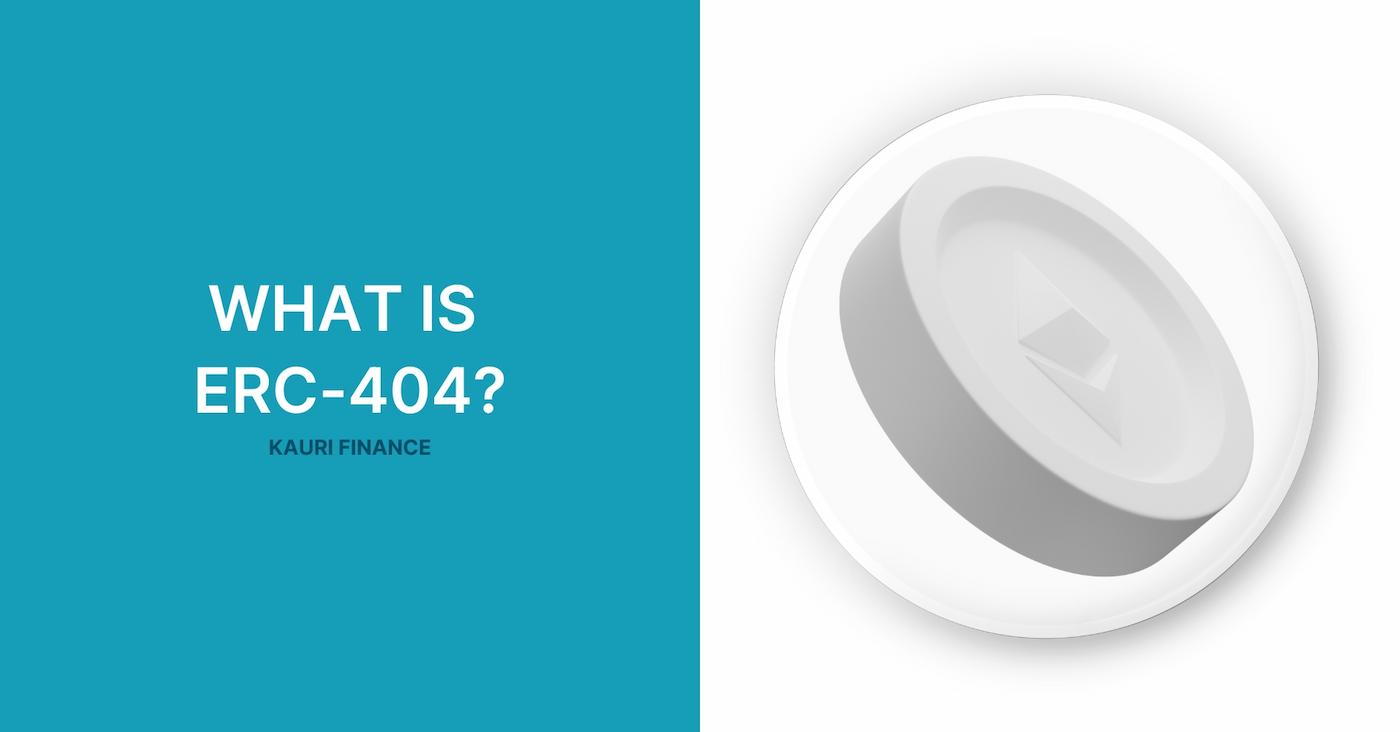
What are ERC-404 Token Standards?

The Kauri Finance team is committed to providing its readers with information on the latest developments in the blockchain industry. One of the most exciting recent innovations has been the introduction of the ERC-404 token standard. In February 2024, two aliases, ‘ctrl’ and ‘Acme’, introduced this experimental token standard. ERC-404 combines the properties of two established Ethereum token standards: the ERC-20, which represents fungible tokens, and the ERC-721, known for non-fungible tokens (NFTs). Despite initial difficulties, ERC-404 aims to merge the two standards ‘as securely as possible while minimising compromises’.
The first project to realize the ERC-404 concept was Pandora, using the PANDORA token and the corresponding ‘Replicant NFT’. This project demonstrates the practical application of ERC-404, showing how the new standard can seamlessly fractionalise digital assets. The successful launch of Pandora has significantly increased the recognition and acceptance of the ERC-404 standard.
What is ERC-404?
ERC-404 is an experimental token standard that combines the properties of ERC-20 and ERC-721. Named after the famous ‘Error 404’ web page error code, it allows for the fractionation of NFTs on the Ethereum network. This is achieved by allowing NFTs to be fractionalised by linking it to an interchangeable token, providing liquidity and uniqueness within a single token standard.
Challenges with Existing Token Standards
The ERC-20 token standard is designed for interchangeable tokens that allow sharing and equal exchange value. However, owning ERC-20 tokens does not provide the uniqueness inherent in digital collectibles. On the other hand, ERC-721 tokens represent unique, indivisible digital assets, but lack the liquidity and divisibility inherent in ERC-20 tokens. These limitations emphasize the need for a new standard that can combine the features of both.
Comparison with Existing Solutions
Previously, fractionation of NFTs required third-party protocols, entailing risks such as relying on a third party to secure the NFTs and managing value discrepancies between NFTs and issued tokens. ERC-404 eliminates these problems by linking the NFT directly to the value of the token via decentralized smart contracts, providing real-time price reflection and removing the need for intermediaries.
Tokenization as a Solution
The ERC-404 token standard resolves many of the challenges associated with owning physical and digital assets by using smart contracts to securely manage fractional ownership and value. Each ERC-404 token can be fractionated and its value directly reflects the price of the underlying NFT. This ensures that investors can trade NFT fractions through liquidity pools, increasing the liquidity of the NFT ecosystem without intermediaries.
How ERC-404 Works?
ERC-404 utilizes a unique mint-and-burn mechanism. When an entire ERC-404 token is purchased, the corresponding NFT is mined and sent to the buyer's wallet. If a fractional ERC-404 token is sold, the corresponding NFT is burned and fractional ownership is transferred to the buyers. This system allows the token to switch between an interchangeable unit and a unique collectible depending on the number of fractions.
Advantages of ERC-404
- Increased liquidity: Allows fractional ownership and trading of NFTs, increasing market liquidity.
- Elimination of intermediaries: Smart contracts manage ownership and value, reducing reliance on third parties.
- Real-time value reflection: The value of a token reflects the price of the underlying NFT in real time, preventing pricing errors.
- Greater market access: By lowering entry barriers, ERC-404 makes high-value assets more accessible to a wider audience.
Converting ERC-404 Tokens
ERC-404 tokens can be converted to their corresponding NFTs and vice versa, allowing for flexible asset management. This feature is critical for investors wishing to trade or own shares of unique digital assets without losing their inherent value. The ability to switch between fractional and full ownership adds a level of versatility that traditional token standards lack.
The development and future of ERC-404
The creators, ctrl and Acme, continue to develop and optimise ERC-404. They are focused on improving gas efficiency and reducing transaction costs associated with mining and burning ERC-404 tokens. The team plans to submit an Ethereum Improvement Proposal (EIP) to officially launch the standard in the Ethereum ecosystem, aiming for wider adoption and recognition. Their goal is to create a seamless, efficient and secure tokenisation standard that can revolutionise the way we think about owning digital and physical assets.
Use Cases of ERC-404
Even at the experimental stage, ERC-404 has a wide range of potential applications across a variety of industries:
- Asset Tokenisation: Enables fractional ownership of high-value physical assets such as real estate, luxury goods and artwork, making these investments more accessible and liquid.
- Decentralised Finance (DeFi): Expands the DeFi ecosystem by enabling the utilisation of non-functioning assets, providing new collateral and lending opportunities.
- Gamification: Represents in-game assets such as avatars or rare items, allowing players to trade and monetise fractional shares of valuable digital items.
- Digital Art: Facilitates the trading of fractional shares in digital artworks, making it easier for collectors to invest in and trade valuable artworks.
Challenges of ERC-404
Despite its potential, ERC-404 faces a number of challenges:
- Lack of official recognition: ERC-404 is not yet recognised by the Ethereum Foundation, raising concerns about security and integrity.
- Experimental nature: As an experimental standard, it presents potential risks and vulnerabilities for those new to the standard.
- Market volatility: Initial popularity does not guarantee long-term stability, and speculative trades can cause significant price fluctuations.
- Potential exploits: The experimental nature of ERC-404 creates opportunities for attackers to exploit it, creating security risks for assets built on ERC-404.
Conclusion
ERC-404 is an innovative approach to digital asset management that combines the benefits of fungible and non-fungible tokens. Although still experimental, its potential to increase liquidity and optimise asset trading is significant. We at Kauri Finance are pleased with the opportunities that ERC-404 brings to the market. We remain committed to providing our readers with the latest information and analyses on such innovative technologies. Consider the diverse opportunities that digital assets like ERC-404 offer. As the blockchain evolves, ERC-404 may pave the way for more integrated and accessible digital investment solutions.
